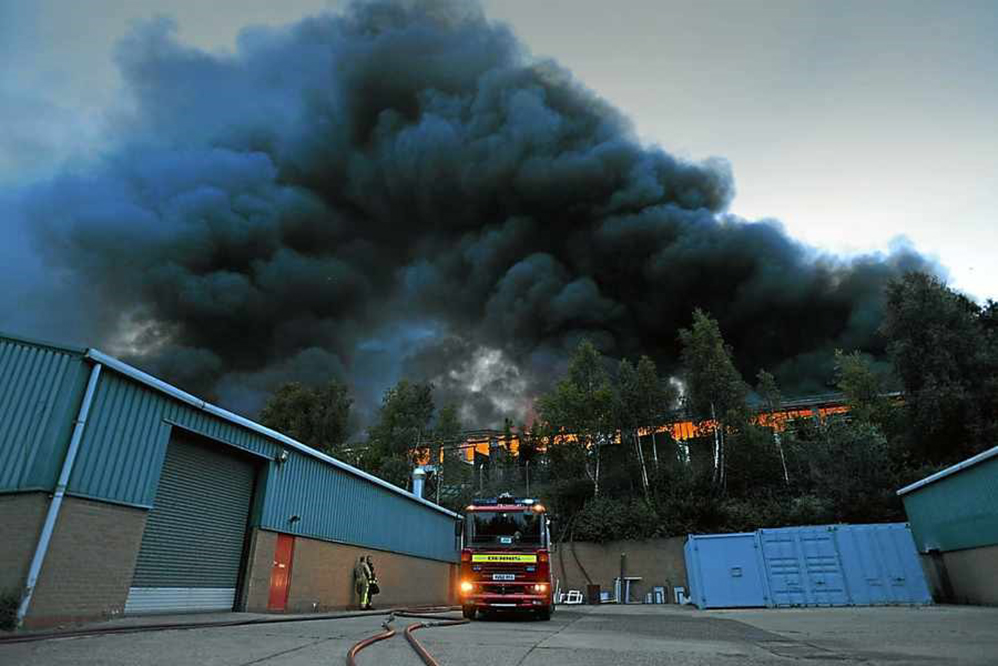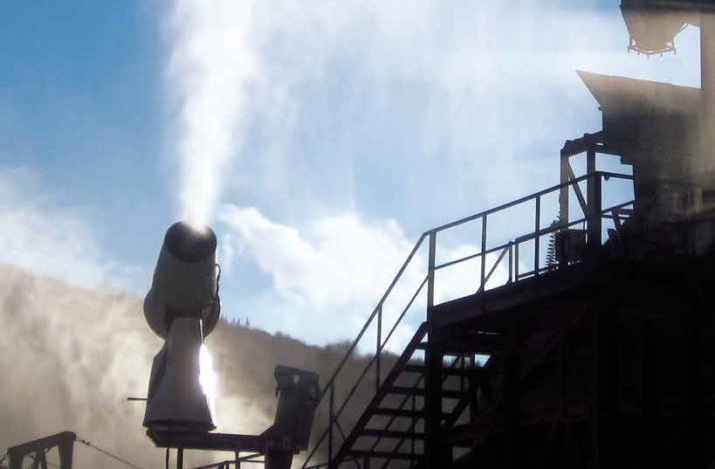Bulk material handlers are familiar with the problem of dust in maintaining a workplace that is safe for employees. Dust is a serious and persistent worker-safety issue that warrants regular review of dust control procedures.
Dust at bulk material handling facilities is typically classified as fugitive dust: dust that escapes the process that created it but is not guided away. Rather, it will often linger and gather where it was produced unless wind or another current carries it.
Dust particles at a bulk material handling facility generally fall into in three categories:
- total dust (largest particle). Visible to the eye, it can enter the human system but often gets trapped before doing so.
- inhalable dust (middle-sized particle). When breathed, it usually is trapped in the nose, throat, or respiratory tract before entering the lungs.
- respirable dust (smallest particle). It can penetrate into the lungs, creating the greatest concern.
If the dust particles include chemical treatments from the source material, they can further irritate the skin and the eyes. In the most severe cases, toxic dust that settles in the lungs can cause cancer.

If fugitive dust is allowed to accumulate for long enough, it can become combustible as well. A dust cloud with sufficient oxygen and an ignition source can result in a damaging and even deadly explosion or flash fire.
In one incident, two workers at a Midwest quicklime plant were killed as a result of unmanaged dust. One of the storage silos had been located above a building being used as a laboratory. One day, without warning, the silo’s hopper section separated from the cylinder section and dropped off, causing the two fatalities in the lab beneath.
The cause was found to be the build-up of lime dust on exposed flanges of the silo’s ring-support steel. The build-up had been trapping moisture that corroded the silo’s cylinder section, and the silo wall eventually thinned until it could no longer support the hopper.
The Occupational Safety and Health Association (OSHA), the Mine Safety and Health Administration (MSHA), and the Environmental Protection Agency (EPA) all publish rules and guidelines concerning the reduction of hazardous dust. Failure to comply and to pass inspections can result in citations and notable fines.
In September 2020, performing a Dust Hazards Analysis (DHA) of how dust hazards are being lessened and managed became a required safety practice as well.
Dust clearly poses a threat to the safety of workers and the greater community, and it can also affect plant production. A well-engineered dust suppression system helps to keep workers safe with thorough and compliant dust management.
What Is Dust Suppression and How Does It Work?
A dust suppression system prevents and controls the dust particles – particularly the tiniest ones – released during the handling of bulk materials.
In the past, operations might have used hoses and sprinklers as leading resources for dust control. These methods provided a steady water flow that could move and wash away dust, but they did not resolve the issue of airborne particles.
Water droplets are often larger than dust particles, in which case the dust particles will tend to follow the airstream around the water droplet. The larger droplets also can disturb settled dust on the ground, creating even more fugitive particles.
Another issue with water droplets is their greater mass causes them to fall more rapidly than dust particles because of gravity’s pull on them.
If however the water-droplet and dust-particle sizes are similar, the dust particle is more likely to collide with the droplet and be absorbed, which drives the dust to the ground. Smaller droplets also will remain suspended in the air longer, allowing them to further interact with fugitive dust.
Dust suppression methods treat dust with solutions that better engage the dust particles’ properties.
What Are the Components of a Dust Suppression System?
 Dust suppression using water can apply a rotary atomizer with a rotating metal-gauze cylinder that creates droplets of uniform size. The atomizer injects water into the cylinder head spinning at 12,000 rpm, which divides the liquid into 900 billion droplets per gallon. The device also gives a linear spray of 60’–90’.
Dust suppression using water can apply a rotary atomizer with a rotating metal-gauze cylinder that creates droplets of uniform size. The atomizer injects water into the cylinder head spinning at 12,000 rpm, which divides the liquid into 900 billion droplets per gallon. The device also gives a linear spray of 60’–90’.
By converting water into tiny droplets with a larger surface area, atomized mist creates the conditions needed for water to collide with dust particles, stick to them, and drive them to the ground. Atomized mist also results in more economical use of water, fewer and smaller puddles, and little to no saturation of material and equipment.
As a dust suppression technology, atomized mist is widely use to control dust at bulk material handling facilities such as biomass, grain, fertilizer, pulp and paper, and cement.
Effectively engineered dust suppression for bulk material handling may also utilize non-flammable, non-toxic, non-explosive, and biodegradable chemical agents that reduce and even eliminate fugitive dust. The dust suppression chemicals should be researched and developed and pass intensive testing to ensure full safety, compliance, and efficacy.
Dust suppression chemicals can include:
- wetting agents that increase water’s ability to wet dust particles and suppress material emissions. Wetting agents lower water’s relatively high surface tension (72 dynes per cm) to 28–36 dynes per cm, improving its ability to wet particles, penetrate material, and decrease dust. These surfactants suppress dust in rapid material-movement applications such as conveyor transfers, rotary cars, and truck-unloading hoppers.
- foam agents that combine foaming and wetting characteristics to allow easy mixing with water. The foam lowers the required moisture for effective dust control by covering and then capturing airborne dust. Main uses include crusher windmills, reclaiming applications where minimizing moisture and the boiler is critical, and applications where extra moisture can create chute pluggage. Mining and transportation also use foam agents to reduce dust both above and below ground.
- residual agents that prevent material from becoming dusty in storage. Using a full-body application, these dust suppression products lessen or eliminate the clouds of fugitive dust that can occur. They help control airborne dust created during conveying and decrease fugitive-dust problems associated with stackout, stockpiles, railcar and hopper unloading feeders, and conveyor transfers.
The Environmental Protection Agency recognizes chemical dust suppression as the “Best Available Control Technology” for various material handling applications.
An effective dust suppression system may further feature solutions for other dust sources.
- Pile & road haul sealer. Encrusting agents produce an eco-friendly, semi-permanent shell over the bulk material to reduce fugitive dust emissions. Beyond guarding against rain and wind erosion, the coating prevents air from entering, which minimizes oxidation in sealed piles – including inactive piles – and reduces the risk of combustion. The encrusting agents also support greater control of shifting, sloping, and material runoff.
- Belt de-icer. Glycol-based freeze control agents use advanced chemistry to modify and weaken the crystal structure of ice so it readily fractures and frozen material cannot stick to the conveyor belt. Serving as both freeze control conditioning agents and dust control agents, these dust suppression products also hold fugitive dust particles on surfaces to reduce dusting during off-loading and handling under harsh operating conditions.
Depending on their dust suppression requirements, operators also can use a portable, manual system at fixed areas that generate a lot of dust, such as conveyor belts and transfer vehicles. Such a system is a self-contained enclosure that requires no electricity to operate.
Dust suppression technology is commonly used throughout a facility, including:
- transfer points
- hoppers
- stockpiles
- unloading stations
- feeders
- haul roads
- discharge chutes
- shipping & railcars
- stackouts
- crushers
- warehouse
- pugmills
What Are the Benefits of a Dust Suppression System?
A well-designed and -engineered dust suppression system for your specific bulk material handling application helps ensure that your operation can:
- reduce the risk of dust fires and explosions
- decrease inhalable and respirable dust hazards
- satisfy regulatory compliance
- fulfill environmental responsibility
- lessen costly housekeeping and maintenance
- extend the lifespan and performance of equipment
Above all, these assets combine to establish an industrial workplace that is safer for workers and ultimately more productive and profitable for the bulk material handling team.
Benetech: Your Ally in Bulk Material Handling
Your operation can win the battle with dust. You need only the right operation-specific dust suppression solutions provided by industry engineers and technicians who understand your challenges. To discover more about our capabilities for your operation, contact us at (630) 844-1300 to speak with a specialist.
Posted in Dust Control, and Fugitive Dust Emissions
